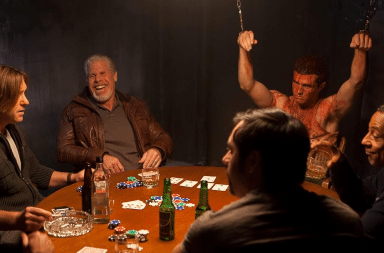Imagine a world in which Cleopatra is the Instagram Queen, without a hitch giving a glimpse into her royal life, whereas Shakespeare turns his impressive soliloquies into engaging feeds that make all users fall in love with him.
Visualize Benjamin Franklin gaining a large online following, and his pioneering electrical discoveries constantly trending on all the social media outlets.
It's a curious fusion of historical nobility and hyperactive PR stunts, creating a novel synergy of the past and today's digitally-driven communications. Let's take a lighthearted tour through this fantastic mental image, exploring the world of Twitter storms, viral videos, and Instagram sport.
Cleopatra: Queen of Ancient Branding
The Beauty Vlogs and Social Media Takeover
Cleopatra, known for her stunning beauty and political acumen, would have been a natural fit for the world of social media.
Picture her on YouTube, sharing beauty tutorials like “The Perfect Cat Eye with Kohl – A Timeless Look,” or engaging her followers on Instagram with glamorous photos from the royal palace.
While Cleopatra could have used social media to enhance her image, modern leaders and influencers can learn effective strategies for impact and reach through resources like one: https://justmarkets.pro/.
With a publicist by her side, she could have positioned herself as a lifestyle guru, promoting exotic skincare products and luxurious fashion brands, ensuring her image as Egypt’s beloved and stylish leader was universally admired.
William Shakespeare: The Playwright with a Press Agent
Crafting Headlines and Soundbites
The lord himself, armed with an cunning perturbable PR man, wouldn’t have misused today’s advantage. Shakespeare's publicist could take his intricate plays and make them popular among the masses by publishing catchy, understandable tweets and headlines.
“Am I indeed to be viral, or not?” This phrase, strategically hashtagged, would attract people throughout the world, and every play premier will spark a discussion, no matter, a global or local one.
Benjamin Franklin: Early Adopter of Viral Marketing
Kite and Key Campaigns
Envision Ben Franklin, the embodiment of Renaissance man, performing his scientific experiments, which were aimed at generating some American buzz.
It may as well have been the first viral marketing masterpiece that many of us are well familiar with nowadays.
TV adverts, innovative social media platforms with witty, catchy sentences telling such as, “A penny saved is a penny earned #ElectricityHacks,” he was not just a founding father but also a founding influencer.
Genghis Khan: Rebranding the Conqueror
From Warlord to Global Strategist
With the correct public relations campaign, Genghis Khan's terrifying reputation may have been significantly improved.
Instead of a harsh conqueror, his publicists portrayed him as a worldwide strategist and unifier, highlighting his administrative abilities and role in uniting the East and West.
Khan would be viewed as a trailblazer who helped create the groundwork for modern economic globalization through carefully produced news releases and clever interviews.
Marie Antoinette: The Influencer Before Influencers
Let Them Eat Cake on Instagram Live
If Marie Antoinette had a modern publicist to assist with her image crisis, she could have greatly benefited.
Rather than being seen as an elitist, she could have set up Instagram Live sessions, attended charity bake sales and shown her humanitarian side instead.
Her controversial quote would be spun positively, portraying her as a well-wisher and someone who valued her fellow beings.
“Let them eat cake” could evolve from being a symbol representing disconnect to one standing for the strife period feeding of the hungry.
Napoleon Bonaparte: The Emperor’s New Brand
Revamping the Conqueror's Image
Imagine Napoleon Bonaparte with a publicist who transforms his violent image into that of a visionary leader.
He would be rebranded as more than a military genius through Twitter advertisements emphasizing his contributions to the Napoleonic Code and Instagram stories displaying strategic ideas.
His new story would highlight his contributions to law reform and civil rights, recasting him as a pioneering statesman rather than a conqueror.
His participation on social media would inject historical strategy into current debates, making him a popular character in modern discourse.
Conclusion
While these situations are lighthearted and inventive, they highlight an age-old truth: image management has always been important, not just in today's media-driven world.
Leaders and luminaries throughout history have deliberately crafted their reputations, much like modern celebrities.
By adding a dash of humor and a sprinkle of creativity, we can see how even the most iconic historical personalities might have benefitted from the strategic touch of a skilled publicist to tailor their legacies for contemporary audiences.
Indeed, history may be the most captivating narrative ever peddled.


